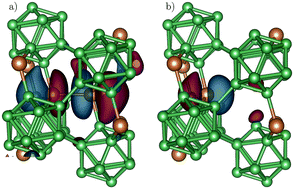Detection of defect populations in superhard semiconductor boron subphosphide B12P2 through X-ray absorption spectroscopy†
Abstract
Recent theoretical work has shown for the first time how the experimentally observed property of “self-healing” of the superhard semiconductor boron subphosphide (B12P2) arises through a process of mediated defect recombination. Experimental verification of the proposed mechanism would require a method that can detect and distinguish between the various defect populations that can exist in B12P2. X-ray absorption near-edge spectroscopy (XANES) is such a method and in this work we present experimentally collected spectra of B12P2 samples with varying crystalline qualities. By simulating the X-ray spectroscopic signatures of potential crystallographic point defects from first-principles within the density functional theory framework, the presence of defect populations can be determined through spectroscopic fingerprinting. Our results find an increasing propensity for the presence of phosphorus vacancy defects in samples deposited at lower temperatures but no evidence for comparable populations of boron vacancies in all the samples that have been studied. The absence of large amounts of boron vacancies is in line with the “self-healing” property of B12P2.

- This article is part of the themed collection: 2017 Journal of Materials Chemistry A HOT Papers


 Please wait while we load your content...
Please wait while we load your content...